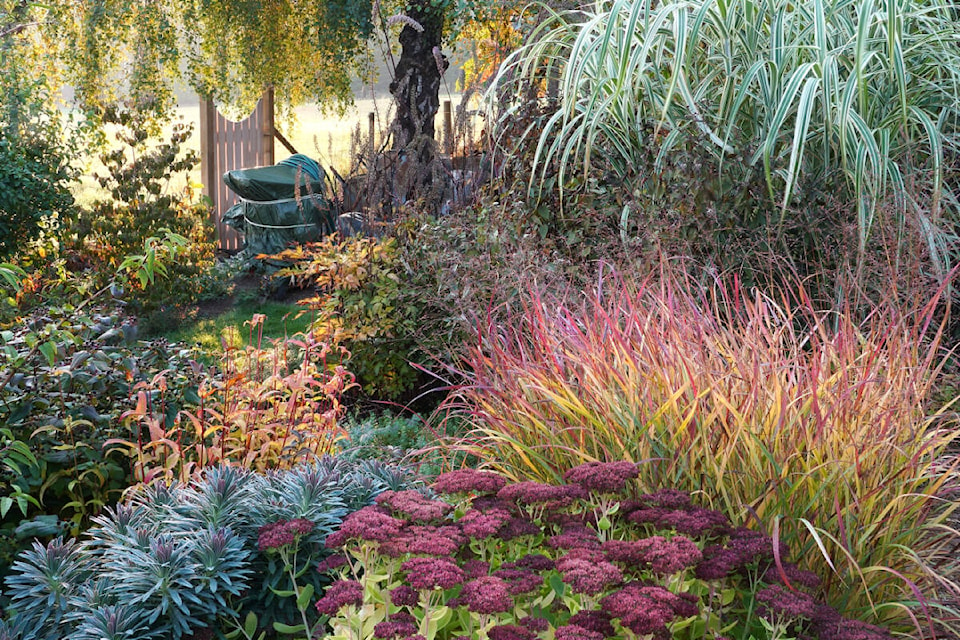BY LESLIE COX
Special to the Record
John is getting antsy. As a photographer, he is so “done” with taking pictures of our garden and usual hiking areas for Sadie’s walks. He wants the inspiration of fall colour to stimulate his artistic endeavours.
Just the other day he was bemoaning the fact his Fothergilla gardenia shrub was very lacklustre for the end of September. “I live for its vibrant colour,” he said. “I think it may be suffering from the summer weather.” (Read about Fothergilla here: https://duchessofdirt.ca/fothergilla-gardenii/)
Good thing I am the optimist in the family… and the more patient one, at that. I chided him that his shrub very likely has survived the summer heat due to his diligence in supplementing our watering restrictions by metering out the bailed water from our kitchen sink and other indoor usage.
I also told him his shrub was probably waiting for the right overnight temperature that will stop the flow of sap to its leaves, triggering their brilliant colour changes. In the meantime, I gently suggested he enjoy the beauty of the grasses in this shoulder season. They are, in fact, one of my favourite focal points in the garden.
I have touted some of our grasses in previous Duchess of Dirt columns over the years. But I realize, I have concentrated more on the big grasses in our garden. Hard not to focus on these ones really, when you are forced to look up at their magnificence.
That is why it was interesting to hear the excited comments about two of our smaller grasses from a couple of recent visitors. I quickly concurred with their enthusiasm as these two grasses are definitely a bonus to the landscape design. I also mentally gave myself a kick in the butt for not shining the spotlight on these smaller grasses before now.
So which grasses, you ask? The first one that elicited ooohs and aaahs was Chasmanthium latifolium… pronounced with a “k”, by the way. Also known as northern sea oats, it keeps a respectable size at about three feet tall and two to three feet wide. Since it is tucked up against the corner of the pergola in the back garden, you would be excused from noticing it on your walkabout. There are no real standout features other than its lush presence of all-green, medium width blades that resemble bamboo stems in late spring through summer.
Come mid-September though, you might notice its flat-headed inflorescence adding a nodding interest to the branch tips. Catch them as they are filtering the early morning or evening light and they positively glow. Casually brush past the grass on your way by and they dance a merry, albeit silent, tune for you. What’s not to love about all that joy?
The other grass that garnered favouritism was Panicum virgatum ‘Rehbraun.’ This one stands out a little more in the garden as its medium green leaf blades start turning a reddish-brown in early to mid-September. But with its narrow, columnar shape and mediocre three-foot height you can be forgiven for walking right past this switch grass earlier in the season because the delphiniums are stealing the show. Now, with no delphiniums and cooler temperatures, this grass is playing centre stage.
I should also mention both these grasses have a respectable growth rate, as in they do not get too wide too fast, so they both look fabulous in container plantings.
So please, John, just enjoy the shoulder season. You really do have some wonderful fall colour in the garden to keep you inspired until the fothergilla shrub joins the colour scheme. Winter will be here soon enough.
Leslie Cox co-owns Growing Concern Cottage Garden in Black Creek.



